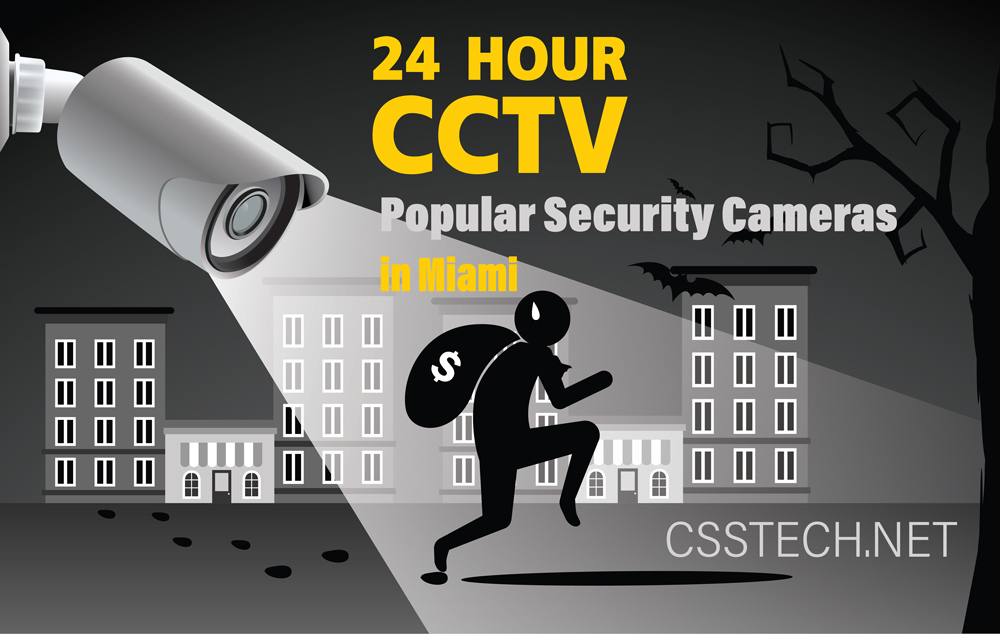Each outdoor security camera must have some degree of protection against weather conditions and outdoors. There are models that adapt to every type of climate, be it rain, frost, high temperatures or high winds. Look for a cover that protects the lens from interfering with precipitation. In addition, some have thermostatic controls that allow the camera to warm up or cool down, to prevent condensation on the lens and mask your vision.
Compared to internal cameras, the choice of an external camera requires more attention to the device hardware, but fortunately there are some options with high performance internal components. Even if your camera is highly weatherproof, it is good to install it somewhere protected from wind and rain, as under the eaves of a roof. Remember to double check if the joints are also protected, and even consider wrapping them with an electric strap in each case.
Extreme weather conditions, climate change, radical changes in high or low temperatures, whether for a short or long time, can also affect a reliable electrical device that works like any other device.
Electronic components, such as monitoring equipment and cameras, vary at a certain operating temperature because different types of weather conditions affect the different components of the surveillance camera.
Different climatic elements
Several climate changes are related to the environment. If you want to install a security system well placed in your company or your home for security beyond the perimeter, I advise you to get cameras adapted to the environment around it, to avoid any failure or breaking your surveillance system. Rain, ice, snow, heat and strong winds can penetrate the outdoor surveillance camera and interrupt all functions.
Ice and snow
The cold weather, which will be considered as snow and ice, will affect the external surveillance system camera during optical and mechanical interruptions. An unshielded camera may be damaged by ice. If there is moisture around the outdoor chamber below the freezing temperature, the lens of the camera may produce frost that creates moisture and temperature and does not allow the viewer to see activities outside of it. If you have a moving camera, such as automatic tracking, ice caused by moisture from the rain or snow can prevent the camera from remaining in place and preventing movement.
Heated cameras
Heated cameras are a very reliable method for outdoor surveillance cameras. It prevents breakage of ice. These heated chambers have built-in temperature sensors and heaters to ensure the chamber never falls below a certain temperature. This type of technology will obviously be more expensive and perhaps more expensive to install at home. However, although these types of cameras can handle heat in very cold weather, the heat produced by your camera for such a long time may not be sufficient to keep the camera at freezing temperatures and continue processing. There are many malfunctions and many sources of energy.
There is also the normal operation of surveillance cameras that produce a certain amount of heat to maintain. The use of these cameras, such as video compression, can increase the temperature of the camera beyond its operating point, making it very difficult to work at a normal speed. The positioning of the camera may affect the flow of cooling air inside the camera to allow it to operate smoothly. To avoid heating up the camera, we also recommend that you do not install it near the material that conducts heat from outside.
Weatherproof cameras
Weatherproof cameras are available to withstand the harshest weather conditions. Its thermal designs are designed so that outdoor surveillance cameras can operate at extreme temperatures during exceptionally high, low, and strong rain or winds. These cameras have a lower risk of damage in these harsh conditions, which will help you save on replacement and repair costs you may need with previously used cameras.
Prevention
For outdoor security camera installations, it is recommended not to have as many problems that affect the cameras to place them in a protected place, even if they are weather resistant. Under protection, the lens of the camera can be protected from most weather conditions, such as rain or snow, or strong winds, which affect clarity through the lens. You can even place it under your home, for example in a plastic bowl that you made to cut pieces and bang against the wall above the camera, or perhaps in a wooden box completely covering camera except for lenses. Everything will help protect weatherproof cameras from these harsh conditions that will affect video quality.
Conclusion
In summary, all outdoor surveillance cameras configured for security reasons will often conflict with the weather more than a few times. Extreme weather conditions may occur more than a day. Weather, such as very low temperatures or dry heated areas, and even areas of strong winds, will cause the external surveillance camera to burn or damage the lens. Therefore, to avoid damaging the camera due to weather conditions, I suggest you cover it with a type of home-made shelter, install it in outdoor areas or with a more expensive factor including housing as a protection must withstand the difficult moments.
Looking for an expert to install an extreme weather security camera in your property?
CSS TECH is expert in extreme weather security camera installation in Miami.
Call today for a FREE Estimate.
List of some extreme weather products we have ready to install.
